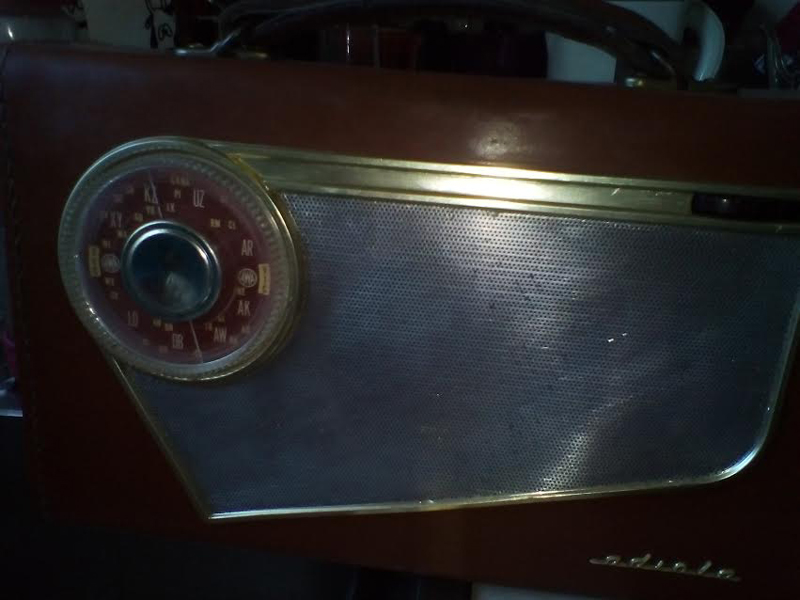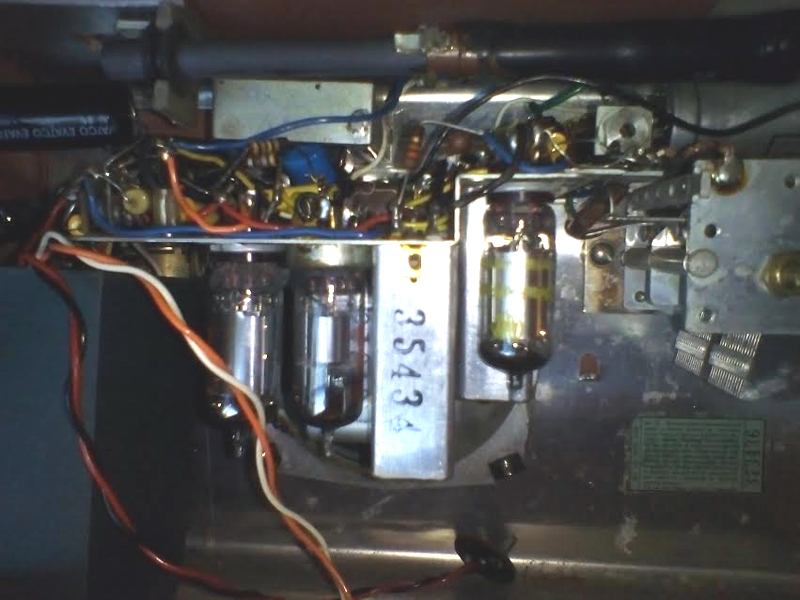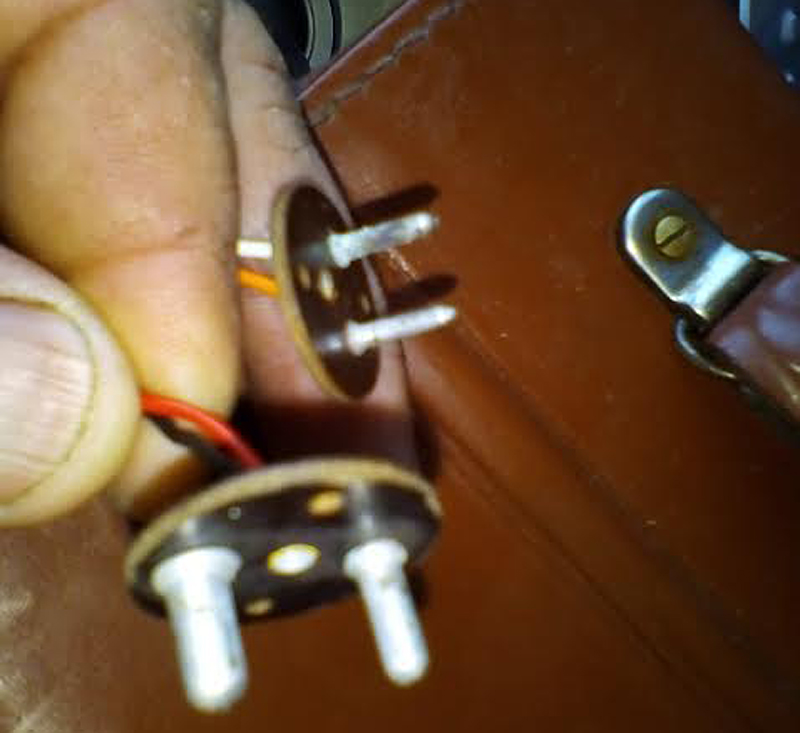General Discussion
Forum home - Go back to General discussion
|
90 volt and 7.5 volt batteries
|
|
|
Return to top of page · Post #: 1 · Written at 7:11:18 PM on 4 March 2017.
|
|
|
|
Location: Clare, SA
Member since 27 March 2016 Member #: 1894 Postcount: 513 |
|
I bought this wonderful AWA Radiola mains and battery radio on Ebay, after a full re-cap, it works great on AC, but the real reason I wanted it is to have a battery powered valve radio to take camping and fishing etc. No problem getting batteries I thought, WRONG! Couldn't find anybody selling the 90 & 7.5 volt batteries I need, however I found the following site with an abundance of them...    |
|
|
Return to top of page · Post #: 2 · Written at 7:25:23 PM on 4 March 2017.
|
|
|
|
Location: Tamworth, NSW
Member since 6 April 2012 Member #: 1126 Postcount: 470 |
|
I have a couple of Tony Maher's B battery eliminator, one is 67.5V and uses 4 AA cells. The other is 90V and uses 6 AA cells. I have fitted them with small alligator clips that connect to the flylead in the radio, you can slide the boot down to insulate them somewhat, Result no mods to radio. |
|
|
Return to top of page · Post #: 3 · Written at 6:40:04 PM on 6 March 2017.
|
|
|
|
Location: Clare, SA
Member since 27 March 2016 Member #: 1894 Postcount: 513 |
|
Does anybody have any "female" sockets to suit the A and B Battery connector plugs? |
|
|
Return to top of page · Post #: 4 · Written at 9:22:20 PM on 6 March 2017.
|
|
|
|
Location: Adelaide, SA
Member since 27 February 2010 Member #: 630 Postcount: 398 |
|
Hi ‾‾‾‾‾‾‾‾‾‾‾‾‾‾‾‾‾‾‾‾‾‾‾‾‾‾‾‾‾‾‾‾‾‾‾‾‾‾‾‾‾‾‾‾‾‾‾‾‾‾‾‾‾‾‾‾‾‾‾‾‾‾‾‾‾‾‾‾ Valve radios, They just don't make them like they used to |
|
|
Return to top of page · Post #: 5 · Written at 10:29:33 PM on 6 March 2017.
|
|
|
|
Location: Clare, SA
Member since 27 March 2016 Member #: 1894 Postcount: 513 |
|
I have already purchased my batteries and the appropriate connectors, and constructed my 90 volt battery, with two parallel stacks of five connected and all taped tightly together with electrical tape, I'm surprised to be advised against this as all of the research I've done up until now has been affirming that this is the best solution. What I really want is the correct battery, but I plan on using a socket which will accommodate the original plug, with the battery connectors soldered to the socket, all neatly insulated. I want to make a small hard cardboard box as close as possible to the original battery size, to which I can place the original stickers in order to have a re-useable battery box which looks identical to the original battery. Printed circuit board or similar may do the job... I'll need to try in any case. |
|
|
Return to top of page · Post #: 6 · Written at 10:51:45 PM on 6 March 2017.
|
|
|
|
Administrator
Location: Naremburn, NSW
Member since 15 November 2005 Member #: 1 Postcount: 7548 |
|
I think ten is safe though I wouldn't be tempted to touch the terminals with wet fingers or do the classic 9 volt taste test. Like the bloke on the video though, I wouldn't recommend cascading the number of batteries that he did. His battery clearly produces a lethal voltage and the current flow, even in those half-dead batteries is enough to kill. 50mA over one second is all that is required. ‾‾‾‾‾‾‾‾‾‾‾‾‾‾‾‾‾‾‾‾‾‾‾‾‾‾‾‾‾‾‾‾‾‾‾‾‾‾‾‾‾‾‾‾‾‾‾‾‾‾‾‾‾‾‾‾‾‾‾‾‾‾‾‾‾‾‾‾ A valve a day keeps the transistor away... |
|
|
Return to top of page · Post #: 7 · Written at 6:36:30 PM on 7 March 2017.
|
|
|
|
Location: Adelaide, SA
Member since 27 February 2010 Member #: 630 Postcount: 398 |
|
The problem is the Punch through voltage on the cells. 9V were never designed to be put in series. 10x the cell value is pushing it a bit, but ill leave it there.... ‾‾‾‾‾‾‾‾‾‾‾‾‾‾‾‾‾‾‾‾‾‾‾‾‾‾‾‾‾‾‾‾‾‾‾‾‾‾‾‾‾‾‾‾‾‾‾‾‾‾‾‾‾‾‾‾‾‾‾‾‾‾‾‾‾‾‾‾ Valve radios, They just don't make them like they used to |
|
|
Return to top of page · Post #: 8 · Written at 7:26:12 PM on 7 March 2017.
|
|
|
|
Location: Clare, SA
Member since 27 March 2016 Member #: 1894 Postcount: 513 |
|
Yeah, that video was an exercise in stupidity, the bloke wasn't even wearing gloves, talk about a death wish! I have a very deep respect for electricity having had a nasty shock once! I'd rather don a bear suit and eat wild honey from a beehive than do what that bloke was doing... Plus it would be more entertaining! |
|
|
Return to top of page · Post #: 9 · Written at 8:24:20 PM on 7 March 2017.
|
|
|
|
Location: Wangaratta, VIC
Member since 21 February 2009 Member #: 438 Postcount: 5590 |
|
One must be somewhat cautious with a few legends in their own lunchtime on the WEB. Its a bit like the "fake news": It exists. |
|
|
Return to top of page · Post #: 10 · Written at 6:47:34 AM on 8 March 2017.
|
|
|
|
Administrator
Location: Naremburn, NSW
Member since 15 November 2005 Member #: 1 Postcount: 7548 |
|
One must be somewhat cautious with a few legends in their own lunchtime on the WEB. ‾‾‾‾‾‾‾‾‾‾‾‾‾‾‾‾‾‾‾‾‾‾‾‾‾‾‾‾‾‾‾‾‾‾‾‾‾‾‾‾‾‾‾‾‾‾‾‾‾‾‾‾‾‾‾‾‾‾‾‾‾‾‾‾‾‾‾‾ A valve a day keeps the transistor away... |
|
|
Return to top of page · Post #: 11 · Written at 10:25:10 PM on 8 March 2017.
|
|
|
|
Administrator
Location: Naremburn, NSW
Member since 15 November 2005 Member #: 1 Postcount: 7548 |
|
Photos uploaded. ‾‾‾‾‾‾‾‾‾‾‾‾‾‾‾‾‾‾‾‾‾‾‾‾‾‾‾‾‾‾‾‾‾‾‾‾‾‾‾‾‾‾‾‾‾‾‾‾‾‾‾‾‾‾‾‾‾‾‾‾‾‾‾‾‾‾‾‾ A valve a day keeps the transistor away... |
|
|
Return to top of page · Post #: 12 · Written at 10:47:31 PM on 8 March 2017.
|
|
|
|
Location: Sydney, NSW
Member since 28 January 2011 Member #: 823 Postcount: 6882 |
|
email saying "We don't ship to Australia". When I enquired as to why, I was told there there is some strange law in place and when they try and ship batteries here. they simply get returned! |
|
|
Return to top of page · Post #: 13 · Written at 11:48:25 PM on 8 March 2017.
|
|
|
|
Location: Latham, ACT
Member since 21 February 2015 Member #: 1705 Postcount: 2216 |
|
Batteries cannot be sent by plane . Maybe its the shipping costs. |
|
|
Return to top of page · Post #: 14 · Written at 12:09:24 AM on 9 March 2017.
|
|
|
|
Location: Sydney, NSW
Member since 28 January 2011 Member #: 823 Postcount: 6882 |
|
Batteries cannot be sent by plane |
|
|
Return to top of page · Post #: 15 · Written at 3:39:32 PM on 9 March 2017.
|
|
|
|
Location: Latham, ACT
Member since 21 February 2015 Member #: 1705 Postcount: 2216 |
|
It's the same as perfume. Because of explosive possibilities they can not be sent by plane. Ask anyone at a post office. |
|
|
You need to be a member to post comments on this forum.
|
|

Sign In

Vintage Radio and Television is proudly brought to you by an era where things were built with pride and made to last.
DISCLAIMER: Valve radios and televisions contain voltages that can deliver lethal shocks. You should not attempt to work on a valve radio or other electrical appliances unless you know exactly what you are doing and have gained some experience with electronics and working around high voltages. The owner, administrators and staff of Vintage Radio & Television will accept no liability for any damage, injury or loss of life that comes as a result of your use or mis-use of information on this website. Please read our Safety Warning before using this website.
WARNING: Under no circumstances should you ever apply power to a vintage radio, television or other electrical appliance you have acquired without first having it checked and serviced by an experienced person. Also, at no time should any appliance be connected to an electricity supply if the power cord is damaged. If in doubt, do not apply power.
Shintara - Keepin' It Real · VileSilencer - Maintain The Rage
